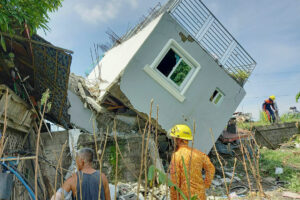‘Greener’ second homes capture buyer interest

By Keren Concepcion G. Valmonte, Reporter
FILIPINOS looking for second homes are also interested in “greener” or energy-efficient features, a global real estate service provider said in a study that also forecast local demand for these residences to continue beyond the pandemic.
In this year’s local edition of Santos Knight Frank’s Global Buyer Survey, it found that 41% of local respondents are keen on properties that would be their “accessible place of rest.”
The figure is higher than the 27% average in Asia and the 33% globally.
“Better lifestyle will continue to be a priority, and second homes will help elevate that so the demand will always be there even after the COVID-19 (coronavirus disease 2019) pandemic,” Residential Services Associate Director Marievie D. Gimena-Villanueva said in an e-mailed response to questions on Dec. 7.
Individuals and families, especially executives and retirees here and abroad, are looking for their own “safe haven.” Homebuyers now want to be prepared “in case another pandemic happens.”
“[Or they simply want to have] a place where they can experience a more relaxed atmosphere, enjoy the beauty of nature, and rejuvenate oneself privately and within the desired pace that they want to live,” Ms. Gimena-Villanueva said.
Second homes located outside cities may also be used by owners to host short-term rentals once travel restrictions ease.
“From an investment perspective, you can never go wrong with acquiring another property for rental purposes as long as you are purchasing in a strategic location that’s accessible [and] offers opportunities for capital appreciation,” Ms. Gimena-Villanueva said.
Majority or 81% of the property consultant’s survey respondents earn over $50,000 annually, “a cohort that has shown resilience in their demand for property during the pandemic and who has the ability to move between locations with much greater ease.”
Nearly half of the local respondents said they did not change their budgets since the pandemic.
“Upgrading the family’s primary residence is the main motivation [to] buy a next house, according to 35% of local respondents,” Santos Knight Frank said. The next reason was for downsizing or retirement as 50% of the respondents are aged 40 to 60 years old.
Meanwhile, one in every four interviewees said their homebuying decisions were delayed due to travel restrictions, but one out of every three respondents said the lockdowns did not impact their plans.
The pandemic restrictions did, however, lead 27% of the respondents to change location preferences.
Santos Knight Frank’s survey also showed that 85% of Filipino respondents moved houses since the pandemic struck. Those who moved wanted more outdoor spaces, planned to downsize, and wanted to have access to better amenities.
Meanwhile, 63% of those who have not yet moved houses said they are “more inclined to do so” within the next 12 months. Most are considering to move to suburbs (40%), followed by cities (33%), in rural villages (20%), and some wanted to relocate abroad (7%).
Infrastructure projects that improve connecting within and beyond Metro Manila are one of the key catalysts for the market.
“While there is the shifting preference to the outskirts and provinces, the city remains ideal for some buyers who prefer to be at the center of everything. We anticipate a gradual rebound for condominium sales in the next year,” Ms. Gimena-Villanueva said.
However, 24% of the respondents no longer put a premium on properties that are of walking distance from work as well as those near transportation hubs and big commercial establishments.
Santos Knight Frank noted an increase of inquiries for areas outside Metro Manila, such as Cavite, Laguna, Batangas, Bulacan, and Pampanga. Elevated cities such as Antipolo, Tagaytay in Cavite, and properties in the Batangas coast also captured market interest.
Further to the increased interest in moving to the suburbs, the survey showed that one in every three local respondents are likely to move to a detached home or villa and 23% are considering waterfront residences.
Homebuyers prefer properties with access to high-speed broadband and houses with their own home office or study.
Health and wellness-related features and amenities are now also on a buyer’s wish list. This includes having “green space,” good air quality, access to healthcare, and houses with good views.
“Interestingly, majority of local respondents have also expressed interest on greener homes although a significantly low number are willing to pay more,” Santos Knight Frank said.
The survey showed that four in 10 respondents wanted a greener home and are willing to pay more for it. Meanwhile, 26% said they would invest in an energy-efficient home “if future environmental regulations impact the value of their property.”
Santos Knight Frank Head of Project Management Andrew T. Frondozo said greener homes aim to reduce carbon footprint. This may be done through using clean energy or solar power, using appliances with inverters to also reduce utility costs, using LED lights as well as having a well-designed house layout.
“Smart homes, for one, are already an emerging market in residential real estate. One of the biggest telco companies are set to allocate 10,000 Mbps (megabits per second) to enable more smart homes in the country,” Mr. Frondozo said.




